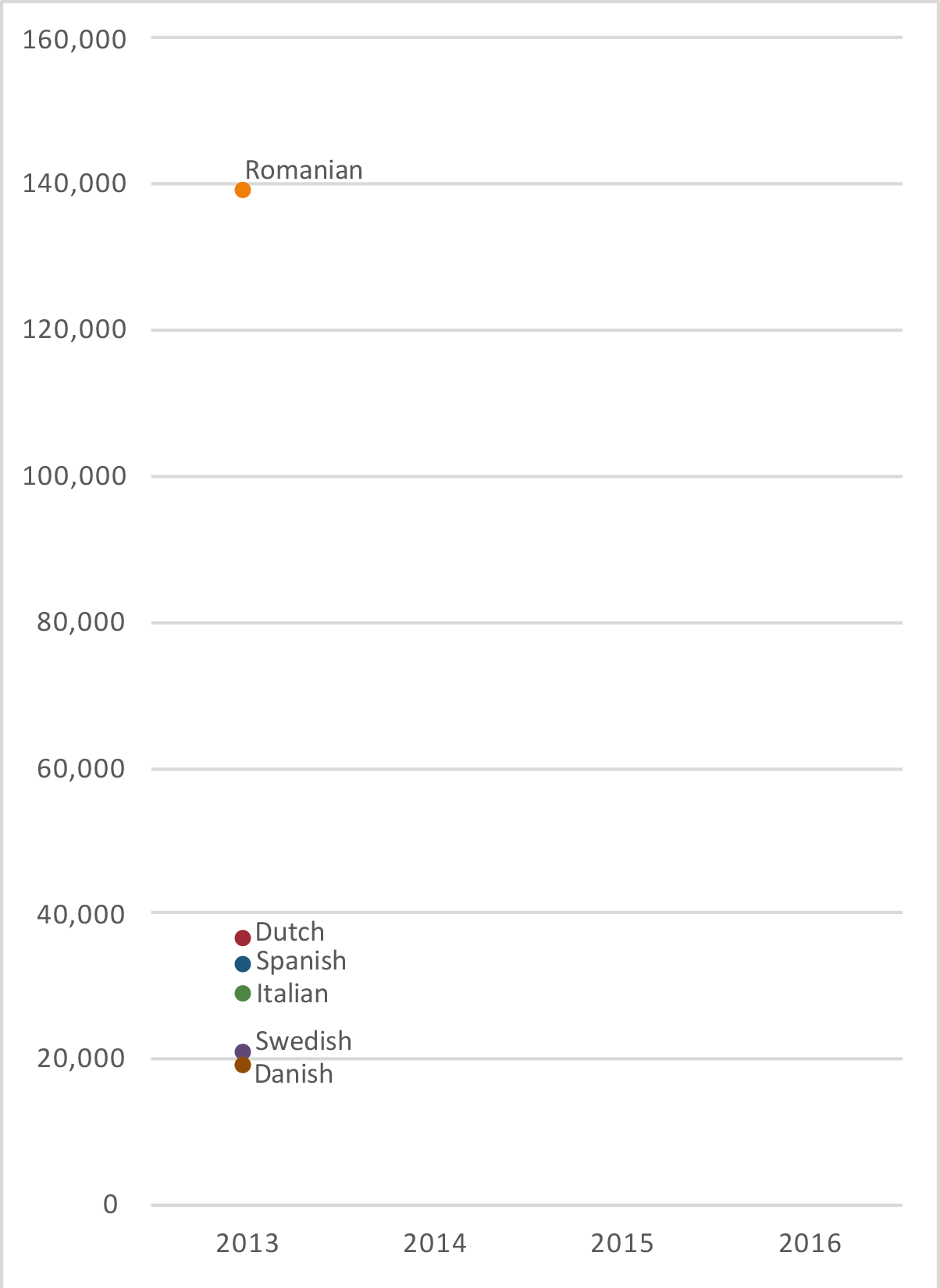The prominence of return migration among intra-EU migration flows
April 16, 2019
By Zachary Strain and Katrin Marchand
In the general discourse surrounding international migration, the most common narratives involve movements from one country to another, whether by crossing a nearby border or by a long journey that might span continents. Either way, the phenomenon of return migration receives comparatively little attention, especially in the context of intra-EU migration.
What is return migration?
The OECD describes ‘returning migrants’ as ‘persons returning to their country of citizenship after having been international migrants (whether short-term or long- term) in another country and who are intending to stay in their own country for at least a year’ (OECD, 2001). The International Organization for Migration, which often approaches return migration in terms of facilitation, defines it as, ‘The movement of a person returning to his or her country of origin or habitual residence usually after spending at least one year in another country. This return may or may not be voluntary. Return migration includes voluntary repatriation’ (IOM, 2011, p. 86).
In the context of intra-EU migration, what constitutes return migration is complicated. Is a migrant’s home country their country of citizenship or country of birth? These often overlap, but choosing one metric over another will most likely omit some segment of the population of interest. Furthermore, there is no data point for establishing a migrant’s country of habitual residence. Even more complicated, if a person has spent the majority of their life in a country different than their country of birth, does moving to the latter constitute return migration?
In this blog post, we explore just how much return migration may be going on within Europe. Our comments are based on the analysis conducted as part of the REMINDER Working Paper Patterns of Migration in the European Union. To learn more about how we define intra-EU migration, and for a guide to what we don’t know about movement within the EU, see this previous blog post.
What is the extent of return migration in the EU?
Return migration can be observed using flow data available from Eurostat, which shows the number of observed immigration and emigration movements in a given year for a given EU28 country.
Based on migration flow figures for 2016, measured by country of citizenship, nine of the top 20 flow groups are citizens migrating from another EU28 country to their country of citizenship. By far the largest flow group based on citizenship is that of Romanian citizens migrating to Romania (119,560 people), while Spanish citizens migrating to Spain (62,573 people) comprise the second largest. In comparison, the largest non-return country-to-country migration flow corridor was made up of Romanian citizens migrating to the UK (61,350 people). In fact, three of the top five flow corridors are citizens migrating to their own country of citizenship. In total, 404,294 people migrated to their country of citizenship in 2016, accounting for about 33% of all the inflows from other EU28 countries that year (excluding non-reporting countries).
Figure 1: Flow of returning citizens of EU28 member states in 2016
There is a similar pattern when looking at the largest flows in 2016 by country of birth. This time, eight of the top 20 corridors were individuals born in an EU28 country returning to that country. Again, native Romanians migrating to Romania were the top movers (90,074). Spanish natives returning to Spain, and Italian natives returning to Italy, were respectively the 4th and 6th largest flows in 2016. Using the country of birth metric, a total of 304,179 people migrated from one EU28 country back to that in which they were born, accounting for about 29% of inflows of EU28 citizens in 2016.
Figure 2: Flows of returning natives of EU28 member states in 2016
Looking further back at the past few years of flow data, the annual top returnee groups are largely consistent for the 2013-2016 period for both the citizenship and country of birth metrics. The figures below illustrate the largest year-to-year return flows for citizenship and country of birth metrics.
Figure 3: Largest return flows by citizenship, 2013-16 Figure 4: Largest return flows by country of birth, 2013-16
Who are the intra-EU28 returnees?
Overall and at the country level (for the top 20 intra-EU migration corridors), males make up a higher share of return migrants than females for both citizenship and country of birth metrics. Hungary and Lithuania have the smallest shares of migrants under the age of 20, suggesting that return migrants to these countries are not migrating with families as often as migrants from other countries (at least in 2016).
Comparing the top returnee groups by the two metrics, citizenship and country of birth, further highlights how these different metrics can often tell different stories. The citizenship metric tends to provide higher counts for total flows than the country of birth. Differences in these figures at the country level reveal the limited overlap that exists between the two metrics, emphasizing how neither definition is completely effective in shedding light on the complete picture of intra-EU return migration. Yet, what can be observed is that return movements are an important part of intra-EU migration; one that requires further attention and more comprehensive data to fully understand.
Katrin Marchand is a postdoctoral researcher at UNU Merit, based at the Maastricht Graduate School of Governance.
Zachary Strain is a research consultant at the Maastricht Graduate School of Governance.
References
IOM (2011a). Glossary on Migration. 2nd Edition. Geneva: International Organization for Migration.
OECD (2001). Glossary of Statistical Terms: Returning Migrants. Retrieved from https://stats.oecd.org/glossary/detail.asp?ID=2349


